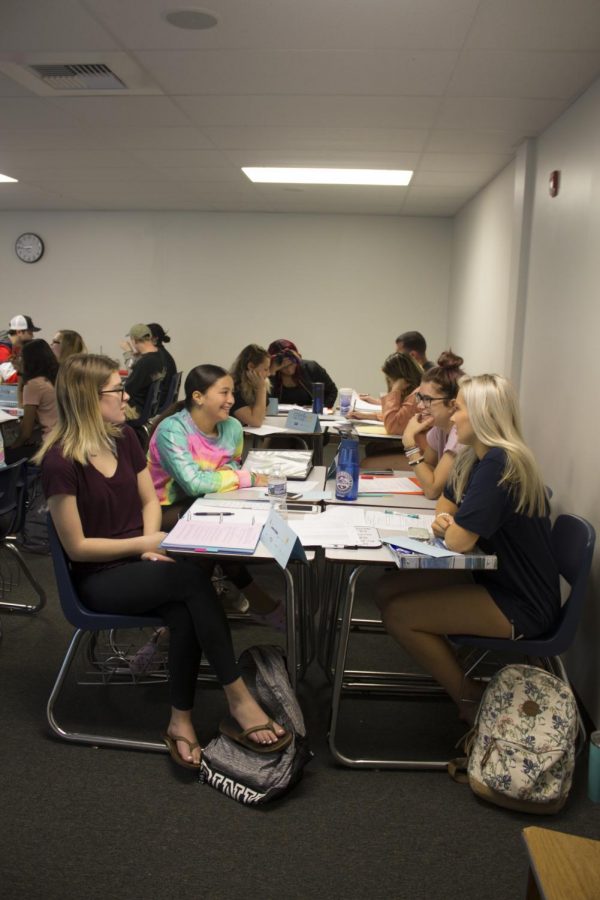AACC psych professor tries new seating style
Psychology professor Julie Grignon has rearranged her class into groups to help engage students.
November 1, 2018
When an AACC psychology professor rearranged her classroom so students could sit facing each other, they became more engaged and she became a better teacher, she said.
“I wanted to change from the person that stands up in front of the class and gives knowledge to students to more of a facilitator of learning that moves around among the students to guide them through their own learning,” professor Julie Grignon said of her decision to arrange her class into table groups.
Grignon, an adjunct here for 13 years who is in her second year as a full-time professor, said her students used to sit in “isolating” rows until last fall when she decided to move them into table groups, where they face each other instead of the front of the room.
According to Grignon, once she moved the tables to accommodate the new collaborative work style of her class her lesson planning strategies changed.
Her plan answers the question: “How could I build a lesson that really involves [students] engaging with each other as opposed to just everyone looking at me standing in front of the room?” Grignon said.
After the change, she said, “I was engaging more and I was getting to know students on a more personal level.”
She added that when she rearranged her classroom for the first time, “I was planning my lessons not around a PowerPoint presentation, but what I could do with them in their groups and what they could do with each other. They were working in the class instead of just taking notes and listening.”
Grignon said she continues to set up her classes this way because it creates an active learning environment for students rather than a passive one.
She said that although there is no concrete proof that her students’ grades improved, their energy and class participation did.
“My students are no longer sitting quietly waiting for me,” she said. They are talking already; they are comparing homework before I even start the lesson.”
Grignon said her students build relationships that last outside the classroom.
“To me that’s really important,” Grignon said.
Although she said she doesn’t have formal data to compare student success before and after the students started working in groups, Grignon said her next plan is to collect specific data and find out if her desk arrangement could directly contribute to student satisfaction, which she said leads to retention.
Jump Start student Katie Macindae, who takes one of Grignon’s psychology classes, said she prefers this style of seating to traditional rows.
“I make friends and it’s easier to work together,” she said.
“If you have a question, you don’t have to ask the teacher; you can just ask a friend [who sits at your table],” first-year nursing student Kimmy Agachinsky, a student in Grignon’s psychology class, said.
Grignon’s colleagues have taken an interest in her experiment as well.
“I’m looking forward to hearing more from professor Grignon about her experiences, especially once she starts collecting more data,” psychology professor Rachelle Tannenbaum said.
“I know that there are other professors at the college who emphasize group work, and there may be some who turn the desks around, but I don’t know of any personally [who set up their room like Grignon].”












